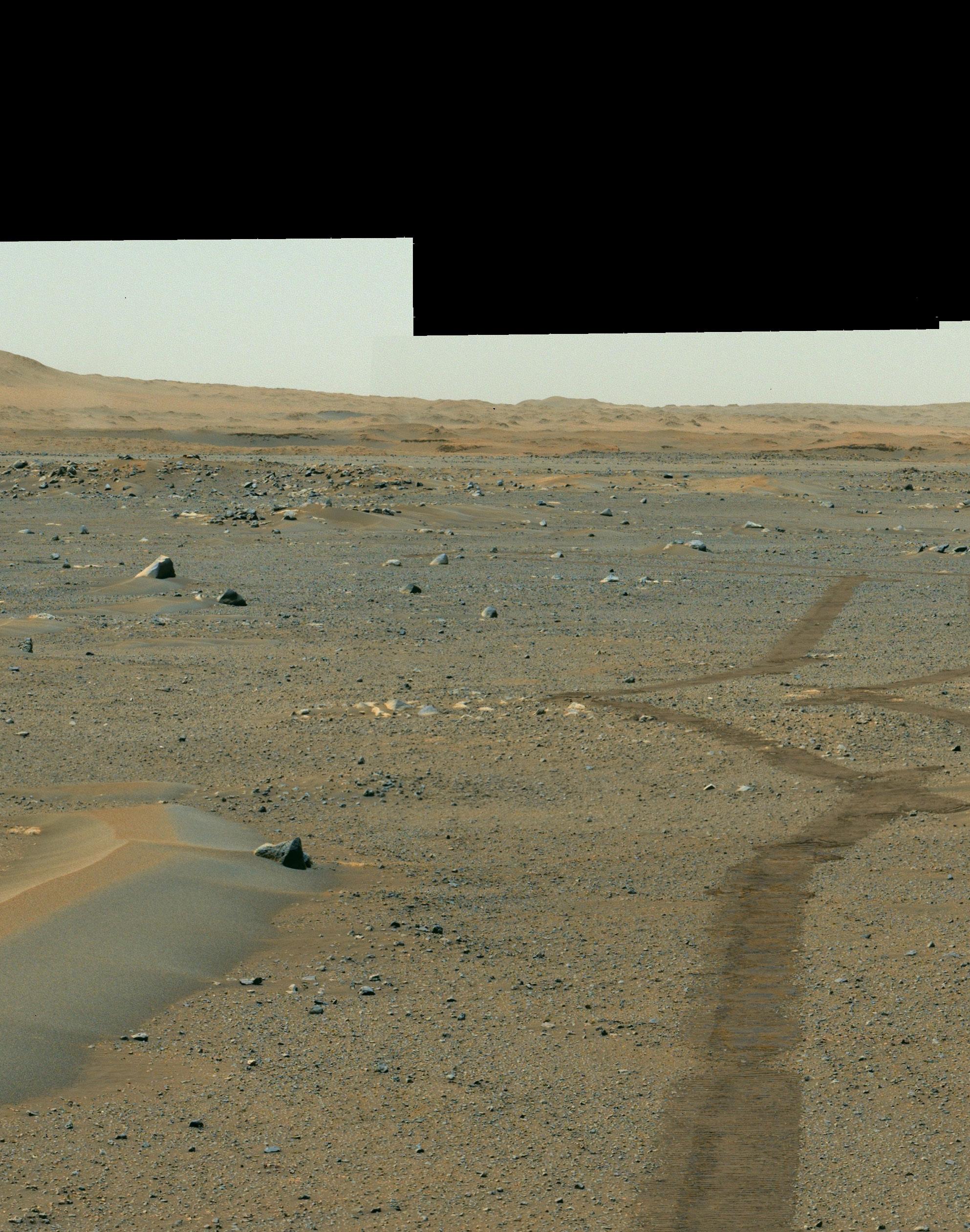
3 minute read
Old Horizons Francesca Cary
This cropped image, from a 360° panorama named Horizon, was one of the first Mastcam-Z ‘mosaic’ products I made from Perseverance rover data.
This image drew me in immediately, giving me the feeling that I was really there. To see what I am talking about, try downloading the full image from here, view it in full screen, zoom right in, and scroll around! Can you spot the rover’s tire tracks, a dust devil, and the Ingenuity helicopter?
The feeling of being there was partially due to how much the surface of Mars reminds me of the Nullarbor Plain – a desert in South Australia and one of the most remote places in the world – where I have spent much time partaking in field trips to track and recover fallen meteorites. Many aspects of this image share striking similarities to the Nullarbor. Aside from the rim of Jezero crater towering high in the background, the two locations share prominent features such as the flat and barren terrain, red dirt, ancient eroded rocks, arid climate, and even roughly the same amount of trees…
Additionally, drones often accompanied us to the Nullarbor to help us search for the meteorites, so seeing the Ingenuity helicopter (which is essentially an inter-planetary drone!) on the surface of Mars was yet another mirror to my experiences here on Earth. Inspiringly, in both places I have now been privileged enough to witness the first tire tracks made on otherwise untouched land.
This image, Horizon, was aptly named, and I look forward to the new horizons to come in the mission, and back to the old rocky horizons that inspired me to be here with the rover on Mars today.
By Francesca Cary, originally published on Mastcamz.asu.edu


Home: The University of Western Australia
Host: The University of Hawai'i, Manoa
Francesca Cary is a geologist and a geneticist, combining her knowledge to research the origin of life on Earth, Mars, and Titan; focusing on how chemical differences between these planetary environments could potentially dictate what forms of life could emerge, what evolutionary trajectories life could take, and fundamentally what features are universal to life. Francesca is undertaking a Master of Earth and Planetary Science at the University of Hawai’i at Mānoa as a Fulbright Scholar, specialising in astrobiology. She is also a student collaborator on the Mars 2020 Perseverance rover mission, and aspires that this experience will help guide her future research and leadership with an understanding of not only where to look for life elsewhere, but also an understanding of how the search can be conducted.

(Up) Wheel tracks on the Nullarbor Plains desert of South Australia. Photo credit: Francesca Cary (Down) This Mastcam-Z image is cropped from a 41×2 matrix of Mastcam-Z left camera images that were stitched together into an enhanced colour 360° mosaic called ‘Horizon’ and taken on mission Sol 114 (June 15, 2021; Site 4, Drive 1062, Sequence ID zcam08094, Zoom 63 mm). Photo credit: NASA/ JPL-Caltech/ASU/MSSS

Tom Dougherty.
FULBRIGHT AUSTRALIA
EXECUTIVE DIRECTOR 2016 - 2021

In July 2021, after five successful years leading the Fulbright Commission, Executive Director Thomas Dougherty stepped down from his role to return to the U.S.
The Fulbright Program in Australia enjoyed unprecedented growth duting the Tom Dougherty years, tripling the number of awards we can offer, improving our connections with universities and research institutions both at home and abroad, and fostering the development of the people whom he worked with.
62,162,708 New Funding
439 Fulbright Scholars in 5 years
116 Study Programs
323 Collaborative Research Projects








